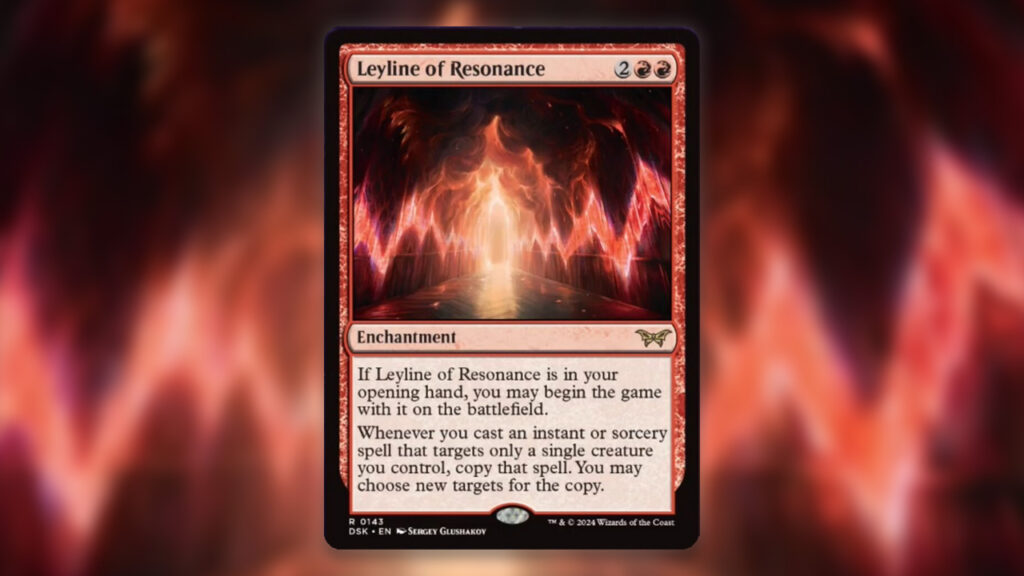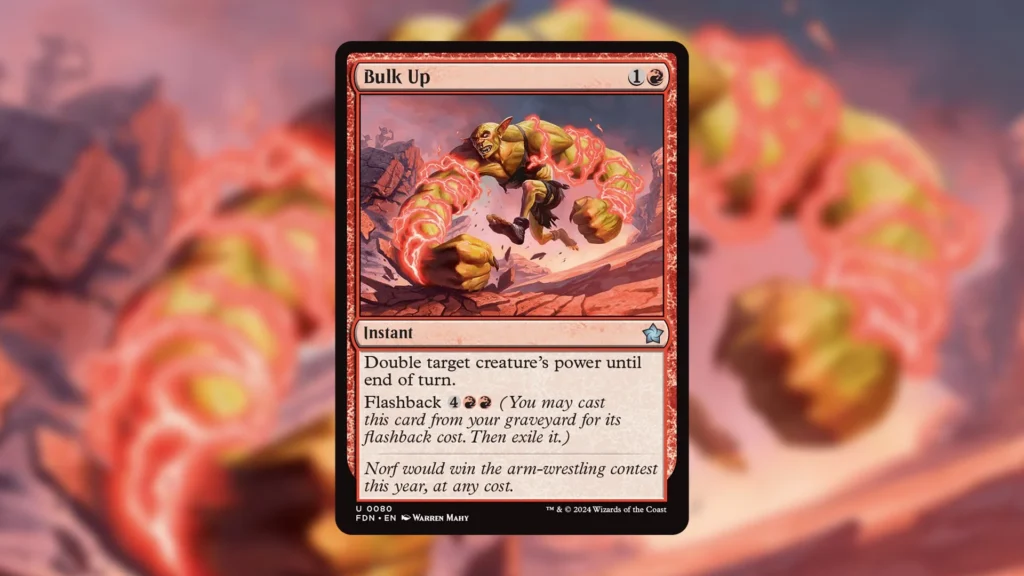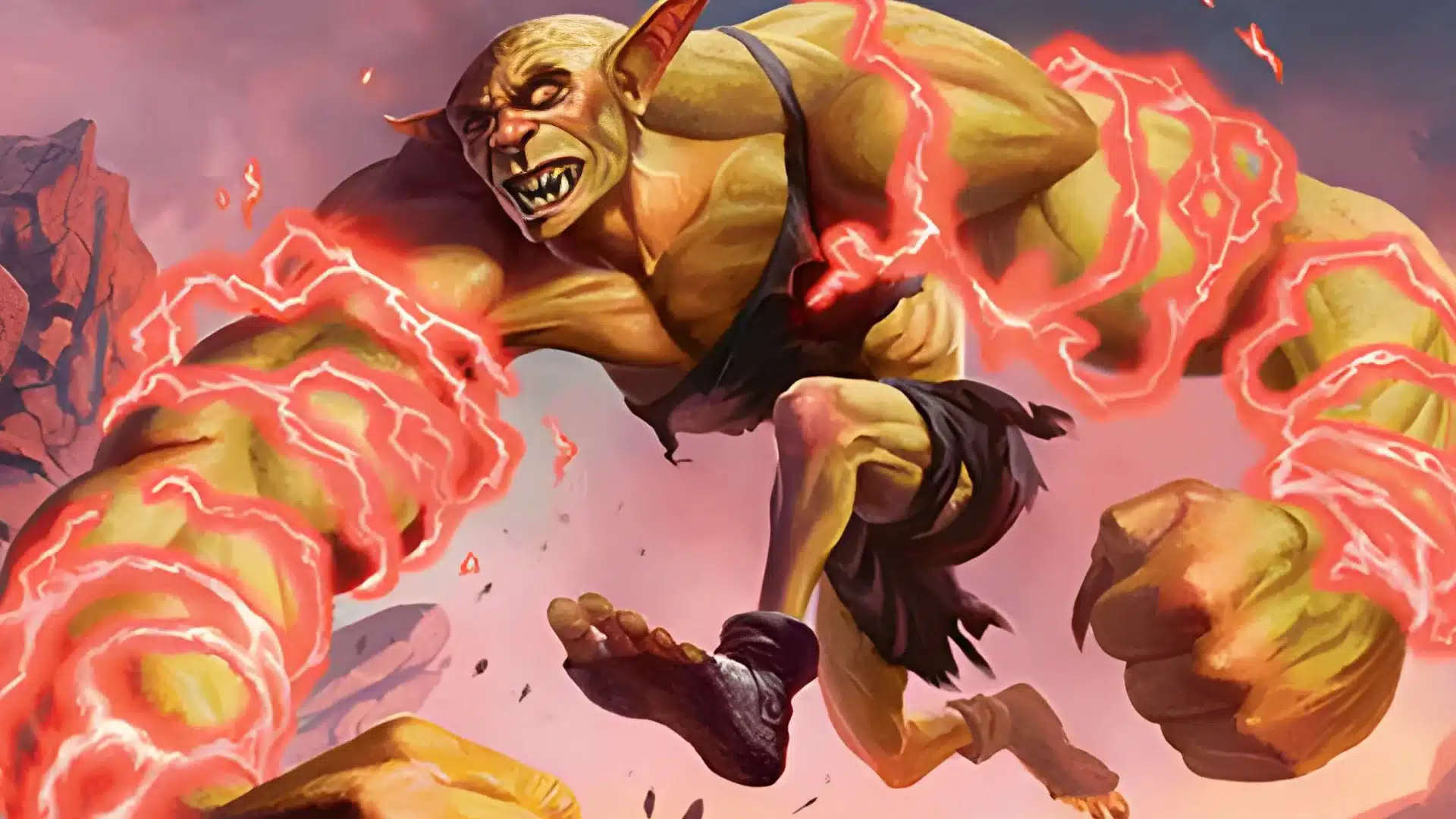Standard is dead until November. Vivi Cauldron has cemented itself as the best deck in the format, and when the chips are down, it will prove very difficult for Vivi Cauldron to be usurped. That said, despite Standard’s awful state, players are still throwing their hats in the ring, trying innovative takes on old ideas despite the Wizard in the room, and some ideas are having a surprising amount of success.
One player specializing in a forgotten Standard archetype just took down a Standard Challenge, besting Vivi Cauldron players on his way to the top. The player has been innovating with Rakdos Leyline deck for quite some time and, utilizing a bizarre uncommon from MTG Foundations, has had repeat successes with the rogue deck.
Rakdos Leyline Returns

After a top 64 finish at Planetary Rotation, as well as a top 8 and a top 16 finish in recent Standard Challenges, MTGO player MacIssac took down yesterday’s Standard Challenge with Rakdos Leyline. This deck has been around for quite some time, even causing Leyline of Resonance to be banned in Best of One Standard on MTG Arena. That said, after the massive Standard banning and Edge of Eternities rotation, this archetype lost multiple key cards and fell out of favor. It seems that MacIssac has brought it back into the fold.
Rakdos Leyline is an explosive aggro deck that utilizes a combination of aggressive creatures and single-target combat tricks to create creatures with massive amounts of power. Then, utilizing Burn Together, the deck strings together 20 damage to end your opponent in one big turn.
Opening the game with Leyline of Resonance doubles the effectiveness of your pump spells, earning this archetype its name. This makes it the most important card in a deck, as the games you play with and without this card will feel completely different. While the deck is no longer capable of turn two kills due to losing Cacophony Scamp in rotation, you can still pull off turn three kills pretty easily. Stacking Turn Inside Out and any other combat trick on any small creature can create a 10-power beater easily. After that, just use Burn Together to close the game out.
The deck’s most explosive lines involve Slickshot Show-Off. The infamous super-Prowess Bird doesn’t see as much play anymore thanks to its fragility, but in a deck that wants to line up massive combo turns, it’s hard to go wrong with the bird. Even without Leyline of Resonance, lining up turn three kills with a Plotted Slickshot isn’t difficult. Throw in the new MTG Foundations addition, and things get even better.
Utilizing Unique Pump Spells

Thanks to the banning of Monstrous Rage, Rakdos Leyline needs to get creative with its pump spells. Many of these cards were found on the fringes of old Pioneer and Standard variants of this archetype, but as choices get narrower, new lights are suddenly shed on overlooked options.
Bulk Up may seem like a fun-of experiment for this deck, but MacIssac has been running it for a full month now. It gives your already buffed creatures an insane amount of reach, occasionally closing the game out without even attacking. It’s reminiscent of the Modern decks playing Assault Strobe alongside Slickshot Show-Off as a way to race Nadu, Winged Wisdom decks when they were still legal.
While Bulk Up can pack a massive wallop, it won’t go far if your opponent has chump blockers. In an effort to alleviate the loss of Monstrous Rage, this deck plays a lot of Trample combat tricks. Dreadmaw’s Ire is particularly strong at the moment, thanks to destroying Agatha’s Soul Cauldron if your buffed creature hits your opponent’s face. Might of the Meek is a more shocking inclusion as a four-of considering that there are only four mice in this decklist, but it shows just how Important Trample is in the deck. Notably, if Leyline of Resonance is out, Might of the Meek draws two cards.
Full Bore and Turn Inside Out are combat tricks meant to upgrade the raw power of your creatures. Full Bore, in particular, offers an impressive stat boost even without its added text, helping you outscale popular damage-based removal.
While the combat trick package of this deck is really novel, the creatures are less so. All of the usual Mono Red suspects can be found here, including important centerpieces to this archetype like Callous Sell-Sword. The lack of Screaming Nemesis, besides the one copy in the sideboard, is a bit unusual, but speed seems to be favored over the impact of individual cards in this list. If you’re trying to outspeed the snowbally nature of Vivi Cauldron, it makes a lot of sense.
Stadium Headliner seeing play over Burnout Bastronaut is an interesting shout, providing this strategy with an emergency removal piece if necessary. The extra body provided by Mobilize can help push through damage after blocks, while Stadium Headliner can clear problematic creatures.
Red’s Next Evolution?
If the goal is to outspeed Vivi Cauldron, it’s hard to go faster than this. Killing on turn three with this strategy, especially when you open with a Leyline of Resonance, is trivial. This speed and explosiveness, however, are not without their downsides.
Rakdos Leyline trades speed for a few consistency issues, but it also becomes extremely weak to targeted removal. Vivi Cauldron has already adapted to Mono Red Aggro, prepared to meet aggressive strategies with eight maindeck removal spells. Combat tricks can be used to outscale damage-based removal, but Into the Flood Maw is a tough card to beat. If Vivi Cauldron creates big creatures fast and makes your attacks poor, Into the Flood Maw can make it tough to claw your way back into the game. As soon as you’re using your combat tricks when your opponent wants you to, it’s extremely easy to get two-for-one’d.
As a result, this deck is a lot harder to pilot than it looks. Knowing when to push damage and hold your spells is really important, as a blowout on either player’s side is easily possible. Whoever can force their opponent’s answers out first generally wins the game with this type of strategy. The good news is that this deck punishes Vivi players setting up for an early combo win by outright killing them.
One major plus to this deck, however, is that it’s fairly cheap, especially on Magic Online. It only costs $116 to build this in paper, and $26 to build it on Magic Online. Compare this to the $500+ Vivi Cauldron decks, and this can be a cheap way to play some Standard until Vivi gets banned.
MacIssac’s finishes do prove that Rakdos Leyline has the tools to hang with the best. It’s not the best deck out there, but if you’re already experienced with Callous Sellsword decks from Pioneer or past Standard formats, this may be a cheaper way to keep up with Standard for the next few months.
Stick with us at mtgrocks.com: the best place for Magic: The Gathering coverage!

